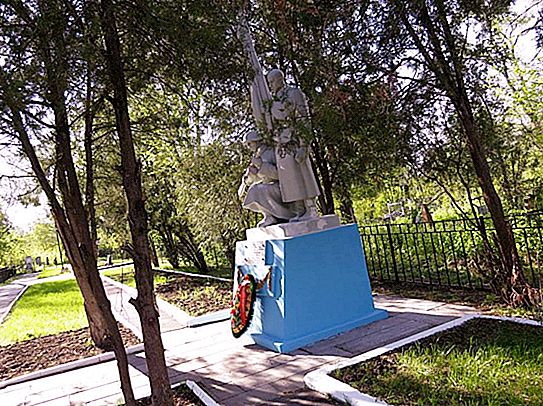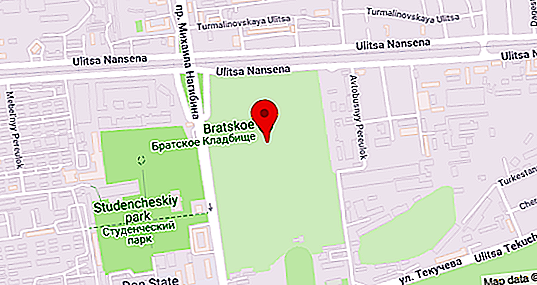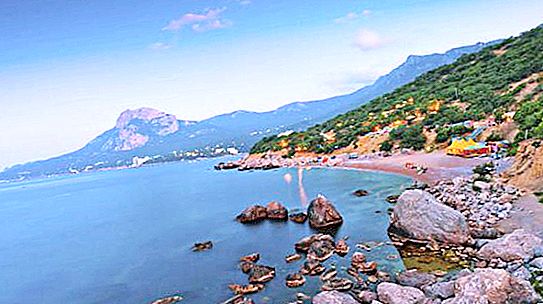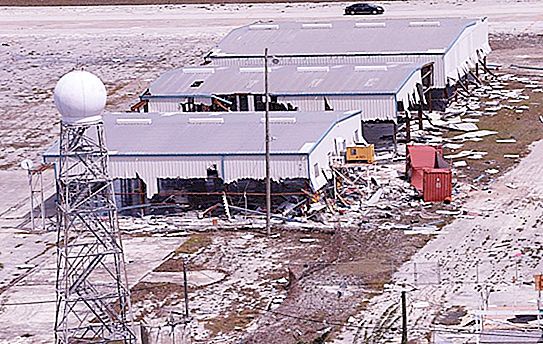The fraternal cemetery in Rostov-on-Don is one of the oldest memorial graveyards of the city. It is located in the very center of the city and according to modern documents has an area of 22 hectares. Also on the territory of the necropolis is the Ascension Church.
History of occurrence
In 1892, a massive cholera epidemic occurred in Rostov. For the mass burial of the dead from this terrible city Duma allocated a plot of land below the Rostov line, formerly belonging to the city pasture. It was divided into two parts, the largest of which was assigned to general burials, the smaller one for a military cemetery.
Every day hundreds of poor people who died from cholera were brought here and buried all together in large graves. In 1892, the cemetery was called Cholera.
In the XIX century on the territory of Rostov there were several pogosts, later destroyed by the Bolsheviks: two Christian, two Jewish, Lutheran, Catholic, military, Mohammedan and Pokrovsky. Of all these, there is now only one of the Jewish.
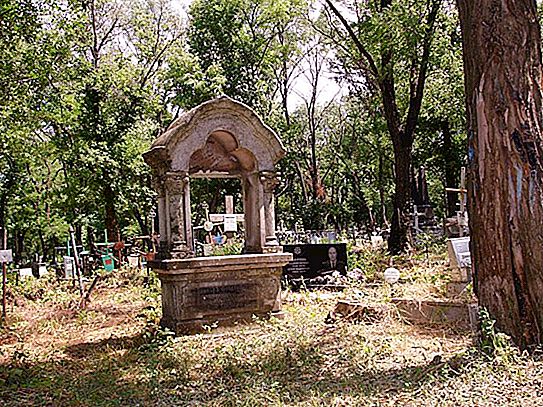
Due to the fact that these cemeteries were located within the city, by the beginning of the 20th century they could no longer expand and accept new dead people. This is where the “Cholera” cemetery located in the steppes was needed, which, due to the large number of common graves, was renamed Bratskoye.
By that time, the burial of merchants, doctors, engineers and professors had already begun on the suburban necropolis, and expensive monuments and tombstones began to appear on the site of mass graves.
Soviet time
During the Civil War, the Fraternal Cemetery in Rostov-on-Don was the burial place of soldiers of both warring armies. After 1918, participants in the White Guard movement who did not have time to leave the city with their troops hid from the Bolsheviks on the territory of the churchyard.
In the middle of the 20th century, during the construction of the city and the expansion of roads, a cemetery site was demolished with the burial places of German soldiers and officers during the Nazi occupation of Rostov. Their remains were taken from the territory of the churchyard in an unknown direction.
Burials were prohibited at the Bratskoye cemetery. They planned to demolish it twenty-five years later, but these plans were never implemented by the authorities. In 1998, family burials were resumed on the territory of the memorial churchyard.
Church
On the territory of the Brotherhood cemetery is the Ascension Church. All funeral Orthodox citizens who died before the revolution were buried in it.
In 1891, the construction of the Alexander Nevsky Church began on the central square of the city. For this period, a temporary stone church was built for the religious needs of the population. In 1908, the Alexander Nevsky Cathedral was built, and a small temporary temple, it was decided to disassemble and transfer to the territory of the Brotherhood cemetery.
At the expense of local merchants from disassembled building material, a new Church of the Ascension of the Lord was built in 1913 on the "Brotherly" graveyard. The church is made in neo-Russian style. A tent belfry was located above the entrance. The facade was faced with red brick.
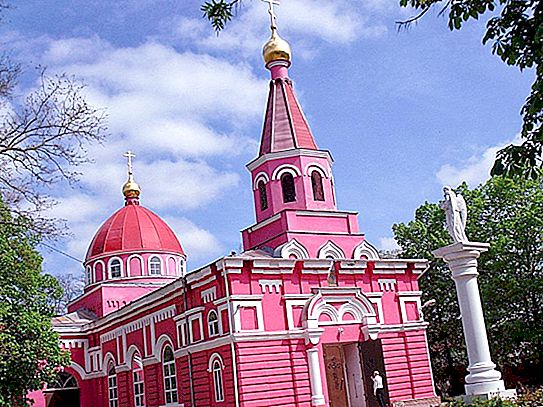
The church at the Bratskoye cemetery in Rostov-on-Don, unlike other temples of the city, was closed in Soviet times only for a short time. From 1929 to 1933 the warehouse of the Dynamo Stadium was located in the temple building. Then the service was resumed.
In 1937, the church at the Bratskoye cemetery of Rostov-on-Don was again closed and plundered. Oddly enough, but the rebirth of the church began thanks to German troops, who during the occupation in 1942 opened the church for worship. The official opening of the church took place in 1946, and more services did not stop.
In 1990, external repairs were carried out in the temple. In the late 2000s, a reconstruction of the exterior decoration of the temple took place.
Now the Church of the Ascension of the Lord is active. It holds all types of worship and req. A Sunday school is opened at the church, and social work is being conducted with the population.
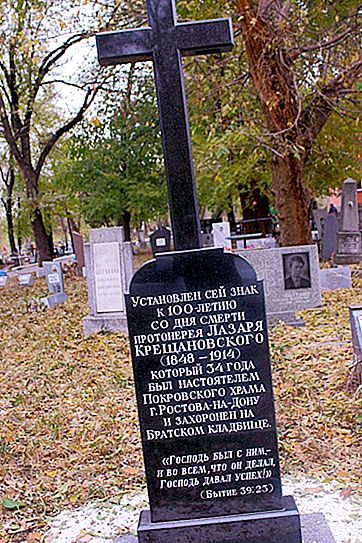
Famous graves
At the Bratsk cemetery of Rostov-on-Don, many pre-revolutionary tombstones and monuments were preserved, some of them without burials. This is due to the fact that they were transferred here from other destroyed urban necropolises.
One of these is a monument to Archpriest Lazarus Kreschanovsky, whose real grave has been lost. By the decision of the parishioners, a commemorative granite slab with a cross was installed near the church. Not far from it also on a nonexistent grave is a tombstone, established in honor of General Litvinenko who died in 1944.
This also includes the symbolic grave of the Rostov pioneer-hero Alexander Chebanov, who died in battles in the Kuban. Under the tombstone, earth was poured from the pass where the young man died.

Also, commemorative signs on the territory of the Bratskoye cemetery in Rostov-on-Don were installed by writer D. Mordovtsev and party member N. Chentsov.
The mass grave of Soviet soldiers has been preserved on the graveyard, monuments have been erected to soldiers who defended the approaches to Rostov from the Nazis and to soldiers of the militia.
In the fifties, a famous doctor and author of works on eye surgery K. Orlov was buried here. There is also the grave of the famous Rostov architect L. Eberg, who made a great contribution to the development of Rostov after the war.
The memory of the sailor of the cruiser “Varyag” Ivan Kaplenkov, buried at the Bratskoye cemetery, was not lost, whose grave is a landmark of the city necropolis.
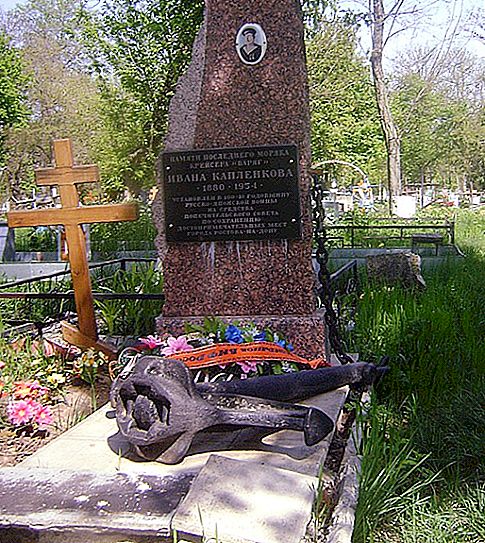
The current state of the cemetery
Today, the administration of the Bratsk cemetery of Rostov-on-Don is doing a lot of work to improve it. Sawed a certain number of trees that interfere with the passage to the graves. Central paths are paved.
More than 500 burials with dilapidated monuments have been identified, on which it is possible to establish data of buried people. At the municipal expense, they were replaced with new standard gravestones.
Part of the cemetery, which was intended for the burial of the military, was not preserved. At this place a sports complex is now built.

In 2011, all burials of the Bratsk cemetery in Rostov-on-Don starting from 1940 were entered into a single electronic database. Information about earlier burials has not been preserved due to a fire that once occurred.
Address and opening hours
The address of the Brotherhood cemetery in Rostov-on-Don: the necropolis is located on Nagibin Avenue, 4.
The city churchyard is open for visits and burials daily from 8:00 to 17:00.
The Ascension Cathedral, located in the cemetery, is also open daily. Divine services begin at 7:40.

